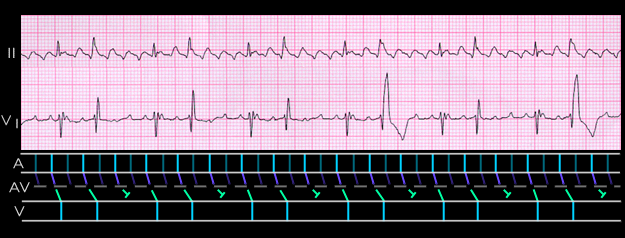In patients with atrial flutter, the appearance of group beating should also suggest type I AV block with Wenckebach periodicity. In this situation, the group beating is best explained by postulating two levels of block within the AV node. This reflect the differing electrophysiologic properties of the various regions within the node. Most often, there is fixed 2:1 block in the upper portion of the node and type 1 block with varying conduction ratios in the lower, although occasionally, this structure is reversed.

The ECG shown here was also shown in the tachycardia chapter (page 7.4.16) to demonstrate aberrant ventricular conduction. It shows atrial flutter with groups of two. The flutter rate is 330 and there is alternating 2:1 and 4:1 block of the flutter waves. This is explained by postulating 2:1 conduction in the upper portion of the node and 3:2 conduction in the lower. The second QRS complex in each group is aberrantly conducted with varying degrees of right bundle branch block.
